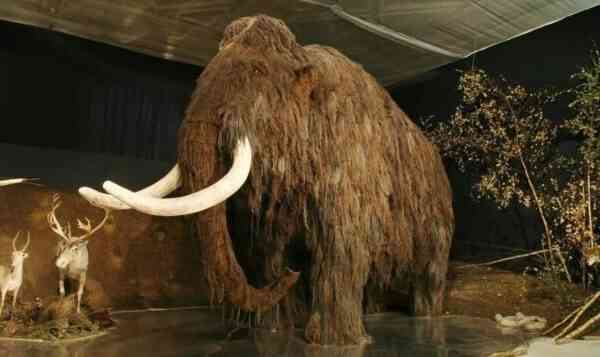Once upon a time, extinct mammoths were very interesting creatures. Being related to modern elephants, however, they adapted to life in a much colder climate, and from the vicissitudes of bad weather they were protected by a thick skin covered with wool. However, primitive people hunted them too enthusiastically, and climate change did its job.
Interesting facts about mammoths
- According to fossil finds, imperial mammoths were twice as heavy as elephants. An adult mammoth could reach a mass of 12 tons. They were probably the largest land creatures since the extinction of the dinosaurs (interesting facts about elephants).
- There were many types of mammoths. Most of them were comparable in size to elephants, but pygmy mammoths weighed less than one ton and were about 2 meters high.
- It is believed that primitive hunters contributed to the extermination of these animals, but opponents of this theory point to the fact that more than 30 species of megafauna, which were not such popular prey among our ancestors, died out simultaneously with mammoths.
- The first mammoths appeared on Earth about 1.6 million years ago. They existed for a long time, and their extinction occurred about 10 thousand years ago, although the most «fresh» the mammoth remains found on Wrangel Island are about half as young (interesting facts about Wrangel Island).
- Indian elephants are genetically closer to mammoths than Africans.
- As part of the project «Pleistocene park» scientists hope to resurrect mammoths using preserved samples of their genetic material and elephant DNA. Yes, it’s almost like «Jurassic Park», and in theory it’s quite possible.
- Unlike elephants, mammoths had a hump. In it, they accumulated fat reserves, much like camels do.
- Once upon a time, mammoths lived in Europe, Asia and North America. Their remains have not yet been found on other continents.
- Unlike tusks, mammoth bones quickly lose strength after exposure to air, and after a few months they begin to literally crumble. To prevent this from happening, they are treated in a special way. But mammoth tusks, after thousands of years in permafrost, become as strong as metal.
- Ancient people hunted mammoths very actively, and not so much for meat, but because of the skins and bones from which they made a wide variety of objects (interesting facts about ancient people).
- The largest types of mammoths lived in North America. They reached a height of 5.5 meters.
- Trinkets made from mammoth tusks are cheaper than elephant tusks, since the trade in ivory is officially prohibited.
- On average, mammoths consumed 150-180 kg of food daily, which is one and a half to two times less than an elephant needs.
- Primitive people used mammoth tusks and ribs as supports in the construction of dwellings.
- These animals came together in herds of 10-15 individuals, but did not form larger groups.
- The last mammoths died out about 5 centuries after the first ancient Egyptian pyramids were built (interesting facts about Ancient Egypt).
- Mammoth tusks could be up to 4 meters long, and their weight could exceed 100 kg.
- Images of mammoths and hunting for them are found in rock art more often than images of any other ancient animals.
- The thickness of the fat layer directly under the skin of mammoths reached 10 centimeters.
- Until now, from time in the permafrost, perfectly preserved remains of mammoths are found. Sometimes even almost intact and intact.
- Mammoths ate mainly grass, cereals and shrubs, but in the hungry winter months they sometimes gnawed bark from trees.
- Most of the fossil remains of mammoths were found in Alaska and northern Siberia.
- If the upper layers of permafrost thaw, the remaining mammoths can easily be eaten by animals- scavengers. This has happened before.
- The teeth of mammoths, flat and intended for grinding coarse plant foods, could change up to 6 times during a lifetime as they wear out.
